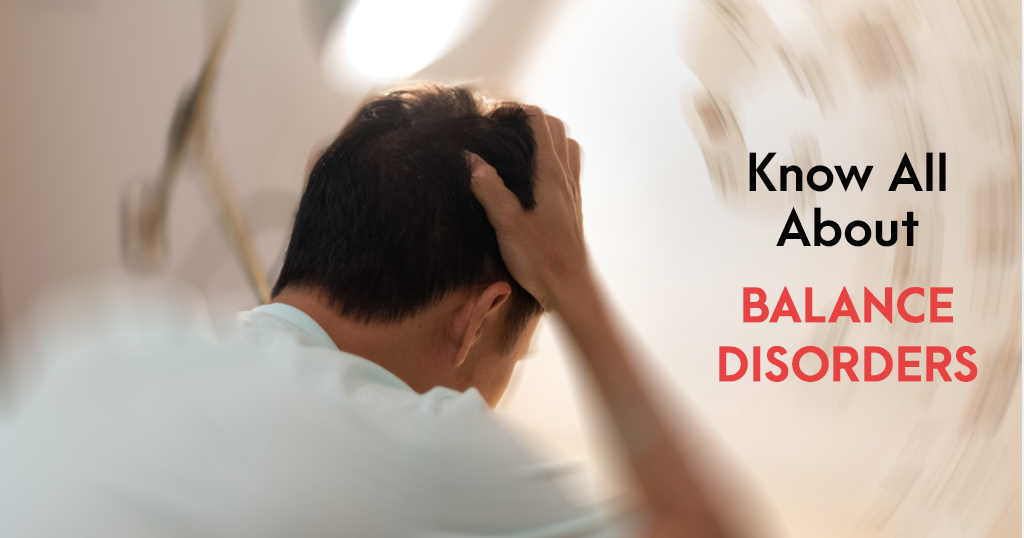

Vertigo is one of the most common symptoms of seeking medical help. It is wrongly considered as a diagnosis/disease, but in reality, it’s just a symptom (like fever, headache, etc.) of an underlying disease. Vertigoand related disorders are grouped under an expanding sub-specialty called “balance disorders”. Studies have shown that lifetime prevalence of balance disorders is 30%. 35% of individuals above the age of 40 and 85% of individuals above the age of 80 have balance disorders due to varied causes. Symptoms of balance disorders are perplexing for the patient.
Owing to lack of awareness, the patients are not able to explain the exact feeling in words. For example, these are the words commonly used by patients to describe balance disorder(s): vertigo, dizziness, giddiness, light-headedness, discomfort in the head, motion sickness, rocking feel, postural instability or swaying while walking, fear of fall while standing or walking, syncope, and loss of consciousness. One peculiar problem doctors in and around Chennai face is a specific term – ‘Gheru’, which not covey anything to the consulting doctors. I have seen patients who have complained of vertigo, but on further evaluation turned out to be Parkinsonism, even seizures. A good medical history, taken by a specialist doctor is the best possible diagnostic step.
The human balance system receives input from three different sources.
These 3 sets of inputs are integrated into the brain; they are combined and compared with each other. The end result is Space concept/spacial orientation. When we are lying/ sitting/ standing/ walking at ‘any given place’, the body would have calculated expected responses from the 3 organ systems, learned from the past experiences (stored information). As long as the sensory inputs from the three organ systems match with the previously stored information, balance is maintained.
Mismatch results in vertigo and other disturbances of balance. So in simple terms, vertigo denotes a hallucinatory sensation of movement caused by the mismatch of sensory information received from the 3 organ systems. I can quote an example of this disorientation that everyone would have experienced while traveling on a train. When the adjacent train moves, we feel that our train is moving.
The first step in diagnosis is all about listening to the patient and grouping his symptoms under one among these 5 headings – Vertigo (head-spinning sensation), Dizziness (illusionary sensation of movement), Disequilibrium (instability/swaying), Presyncope, Lightheadedness. The onset, time duration of symptoms, triggers, frequency, relieving factors, associated symptoms, progression are the key points in history.
Next step is recognizing the pattern of involvement.
There are some key points in Neurological and Otological examination which helps in narrowing down the diagnosis. Investigations are aimed at confirming the diagnosis, specifically looking for functional (eg: V-HIT), and structural integrity (eg: MRI Brain).
Treatment
Common balance disorders are Benign paroxysmal positional vertigo (BPPV), Vestibular Migraine, Stroke, Vestibular Neuritis, Meniere’s disease, Vestibular paroxysms, Phobic postural vertigo, Post-traumatic vertigo, Orthostatic dizziness, Severe sensory neuropathy causing sensory ataxia, parkinsonism, medical causes, cardiac causes, functional/psychogenic/phobic dizziness, drug-induced dizziness.
The successful treatment of Vertigo and related balance disorders depends on finding the exact cause behind.
Dr. P.R. PRABASH
MBBS, MD, DM
Consultant Neurologist